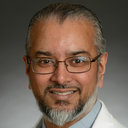Effect of passive smoke exposure on general anesthesia for pediatric dental patients.
Mots clés
Abstrait
The purpose of this study was to test the null hypothesis that children with environmental tobacco smoke (ETS) exposure (also known as passive smoke exposure) do not demonstrate an increased likelihood of adverse respiratory events during or while recovering from general anesthesia administered for treatment of early childhood caries. Parents of children (ages 19 months-12 years) preparing to receive general anesthesia for the purpose of dental restorative procedures were interviewed regarding the child's risk for ETS. Children were observed during and after the procedure by a standardized dentist anesthesiologist and postanesthesia care unit nurse who independently recorded severity of 6 types of adverse respiratory events-coughing, laryngospasm, bronchospasm, breath holding, hypersecretion, and airway obstruction. Data from 99 children were analyzed. The children for whom ETS was reported were significantly older than their ETS-free counterparts (P = .03). If the primary caregiver smoked, there was a significantly higher incidence of smoking by other members of the family (P < .0001) as well as smoking in the house (P < .0005). There were no significant differences between the adverse respiratory outcomes of the ETS (+) and ETS (-) groups. The ETS (+) children did have significantly longer recovery times (P < .0001) despite not having significantly more dental caries (P = .38) or longer procedure times. ETS is a poor indicator of post-general anesthesia respiratory morbidity in children being treated for early childhood caries.


